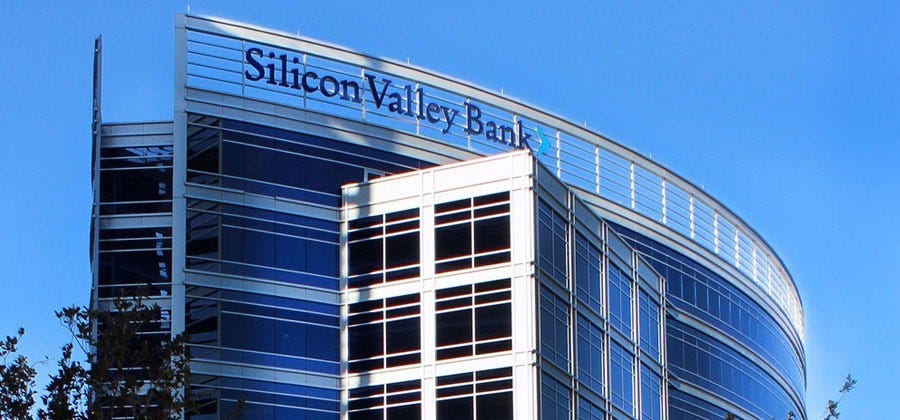The US Banking Crisis, Dedollarisation and Gold
The US banking crisis – a speed-bump for the equity rally but a larger problem for credit growth, and how central banks have been buying more gold and fewer US Treasuries
This Insight is not investment advice and should not be construed as such. Past performance is not predictive of future results. Fund(s) managed by Seraya Investment may be long or short securities mentioned in this Insight. Any resemblance of people or companies mentioned in this Insight to real entities is purely coincidental. Our full Disclaimer can be found here.
This Insight is an extract adapted from the Panah Fund letter to investors for Q1 2023.1
The year has got off to a flying start, with global equity markets performing well despite the emergence of a rolling banking crisis in the US, as well as nascent signs of banking stress in Europe. So far in Asia, the banking sector has remained quiescent.
In March, Round One of the crisis witnessed four banks – Silicon Valley Bank (‘SVB’), Silvergate Capital, Signature Bank, and then Credit Suisse – succumb within the space of a week. Round Two in April has so far seen one institution – First Republic Bank – fail and be absorbed by JPMorgan Chase & Co, with stress rising among other regional banks.
Regulators acted fast to contain the damage. We think more punches will have to fly before the US Federal Reserve (the ‘Fed’) calls for a technical knockout and reverses course on policy.
In our previous letter to investors (for Q4 2022), we noted the “surprising absence of global systemic financial risk events” despite “the massive surge in developed market interest rates in 2022”. Might this be the start of a systemic risk event?
The underlying factors contributing to the US bank collapses in March included hubris and poor judgment as managements failed to hedge interest rate exposures. A failure of regulatory oversight was also to blame. The acute cause was a rational panic among the bank’s depositors, who pulled out their funds as they correctly anticipated that unrealised losses on bonds could obliterate bank equity.
That so many supposedly ‘solvent and well-capitalised’ banks could fail within such a short period of time also raises serious questions about whether the current global banking regulatory framework itself is fit for purpose.
These conflagrations were not, however, allowed to grow into systemic risk infernos. Instead, the regulators were standing ready with fire extinguishers.
The Fed quickly introduced a new Bank Term Funding Program (‘BTFP’) which allows banks to post bonds as collateral at par rather than market price. (This headed off solvency concerns for other smaller banks with large unrealised interest rate losses in their bond portfolios.)
The regulator also bailed out all deposit-holders at Silicon Valley Bank (‘SVB’), including uninsured deposits (with more than US $250,000).2 It’s notable that Signature Bank and Silvergate Capital were treated differently from SVB, possibly because of their links to facilitating payments for the cryptocurrency industry.
Only time will tell whether smothering risk and suffocating moral hazard is a sensible long-term strategy for purportedly capitalist countries.
While we have our doubts, the equity markets seem content for the moment.
Market Outlook
Panah’s hesitant forecast in our Q4 2022 letter was for strong equity market performance early in the year, as “US inflation falls, markets anticipate Fed easing on top of a technical boost to liquidity, China reopens, and as investors scramble to catch up after becoming too bearish in late 2022.”
The early 2023 rally scenario has largely played out, against market expectations. We will now have to see if the second half of our reluctant prediction – more of a rocky road for equity markets in H2 2023 – also plays out. Sell in May?
Most of the uncertainties and challenges outlined in our last letter are still extant.
On the plus side of the column, the latest data from China seem to indicate an economic recovery, although geopolitical tensions and renewed domestic crackdowns are a growing concern. On the minus side, brinkmanship over the US debt ceiling looks likely to cause more volatility for markets and uncertainty for the economy in coming months.
The rolling US banking crisis inevitably means tighter credit conditions, especially for small- and medium-sized enterprises which are dependent on loans from those banks worst affected by the turmoil.

To date, the rolling US banking crisis has mostly been about reality catching up with banks which hadn’t hedged their interest rate risk. Going forward, we expect to see more pressure on the banking sector from deteriorating corporate earnings and rising credit risk. In particular, there is potential for a downward spiral in commercial real estate values.
It thus seems increasingly likely that a US recession is a question of *when*, rather than *if*. There remains significant uncertainty, however, on the depth of the valley ahead.
Against this uncertain backdrop, the price of gold is approaching new highs. Gold bears had expected the old correlations – with the US Dollar and real interest rates – to hold and for the gold to trade cheaper. Indeed, gold models based on the Dollar and real rates would have predicted a consistently lower gold price, especially over the last year.
A resilient gold price does not come as a particular surprise to us. Indeed, in early 2022 we flagged this as one of the most likely consequences of the growing ‘weaponisation’ of the US Dollar through sanctions (and the freezing of Russian forex reserves in particular).3
We anticipated that as a result of these developments, ‘non-aligned’ nations would be pushed to think very carefully about their US Dollar exposures, observing that “gold is probably the only reserve asset with a market of sufficient size and standing to absorb [growing] de-dollarisation reserve flows”.
Recent data has confirmed a trend towards de-dollarisation within forex reserves, with respected economist Stephen Jen commenting recently that the US Dollar “suffered a stunning collapse in 2022 in its market share as a reserve currency, presumably due to its muscular use of sanctions”. He and his colleagues believe that the US Dollar is losing share at a far faster pace than is commonly believed.
On the other hand, the latest data from the World Gold Council shows central banks continued their 11-month buying spree of gold in February 2023. So far this year, central bank purchases of gold are off to their strongest start since 2010.
While other buying and selling of gold – in jewellery, bar and coin form, as well as in ETFs – has had a more significant impact on gold demand over a longer time period, central bank purchases are now providing a strong tailwind.
As the Fed tightening cycle moves towards its peak, the yellow metal looks well-placed to benefit. Banking stress and geopolitical tensions are also providing support… The perfect storm?
Thank you for reading.
Andrew Limond
The original source material has been edited for spelling, punctuation, grammar and clarity. Photographs, illustrations, diagrams and references have been updated to ensure relevance. Copies of the original quarterly letter source material are available to investors on request.
Clearly, it would have been too much to expect that moral hazard should also apply to the tech titans and venture capitalists who kept all their funds at SVB and neglected to practise basic risk management. This episode leaves a strong impression of privatised profits and socialised losses.
Please see the Panah Fund letter to investors for Q2 2022 (pp.17-19), and the following Seraya Insight: ‘Reflections on the Russo-Ukrainian War and a “New World Order”’. These were written just after the Russian invasion of Ukraine.




